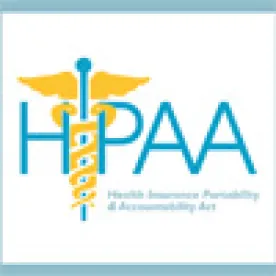I recently had the pleasure of speaking to a great group at the Connecticut Assisted Living Association (CALA) about HIPAA and a range of related practical issues. Many covered entities and business associates, particularly those that are small businesses, continue to work on understanding the privacy and security standards, and how to best apply them in their businesses and with their varied workforces. Compliance can be challenging, but it is important to get started and document the compliance steps taken. Here are some reminders about HIPAA privacy and security compliance:
-
Risk assessment. This is a critical step required under the security regulations. Many covered entities and business associates focus first on written policies and procedures to safeguard protected health information (PHI). But those policies and procedures need to address the risks and vulnerabilities to PHI, which can only be determined through an appropriate risk assessment. Of course, organizations need to continually assess their risks and vulnerabilities as their businesses change and grow.
-
Business Associate Agreements. The Health Information Technology for Economic and Clinical Health (HITECH) Act made a number of changes affecting “business associates.” Among those changes were updates to the “business associate agreements” that the HIPAA Rules require covered entities to maintain with their business associates, which could include claims administrators, consultants, cloud and other data storage providers. The final HIPAA regulations established a transition rule that permitted covered entities and business associates to continue to operate under certain existing business associate agreements for up to one year beyond the compliance date of the final regulations (September 23, 2013). That transition period ends this month. Accordingly, it is critical that business associate agreements be updated.A starting point for business associate agreement compliance is the set of sample provisions posted by the Office of Civil Rights. However, there are other issues that parties to the business associate agreement will want to address, such as, data breach coordination and response, indemnity, and agency status. Additionally, a number of state laws (e.g., California, Massachusetts, Maryland) require businesses to have contracts with third-party service providers to safeguard personal information, which likely will include information in addition to protected health information under HIPAA.
-
Data Breach Preparedness. Data breaches continue to happen across the country, exposing vast amounts of sensitive data. HIPAA regulations and laws in 47 states require a number of steps to be taken when a breach happens including notifying the affected individuals and certain governmental agencies. Absent a plan for responding, companies often find themselves ill-prepared to respond timely, correctly and completely. Responding timely is particularly important for avoiding an inquiry from a federal or state agency concerning a data breach. Having a plan and practicing that plan can significantly enhance a company’s ability to respond and minimize its exposure following a breach.
-
OCR Audits. It is expected that the Office for Civil Rights, which enforces the HIPAA privacy and security rules, will be resuming its audit program this fall – which applies to both covered entities and business associates. There are many steps covered entities and business associates can take to be audit ready. Good documentation is one of the most important. OCR wants to be able to see that the organization has taken steps to address the standards under the privacy and security rules. A documented risk assessment, written policies and procedures, and sign-off sheets showing workforce members went through HIPAA training are all examples of documentation an OCR investigator would be expecting to find as part of the audit.
Being “compliant” is no small task, especially as each business has its own particular needs, risks, vulnerabilities, environments, and circumstances that have to be considered. Compliance for an assisted living facility, for example, might look a bit different than it does for a large metropolitan hospital, but many of the fundamental principles are the same. The key is to get started, understand the risks to PHI, address those risks in a manner appropriate to the organization (one hundred and fifty pages of policies and procedures is not appropriate for many organizations) and under each of the required standards, implement appropriate policies and procedures, and document.




 />i
/>i

